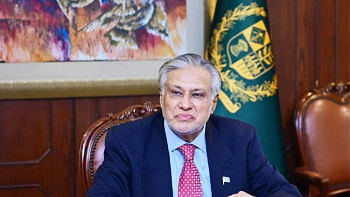Stocks: Party is over. What next?
The stockmarket that appeared to be a miracle has now turned into a scourge.
It grew too fast, just in the last two years. The share index trebled, so did market capitalisation. Daily average turnover grew by seven times. It was a market that pulled in tens of thousands of new investors from across the country. Those who were once desperate to make quick bucks from the miracle, are now walking out on the bourses only to save what is left of their investment.
The last two weeks were the most desperate time. The bubble burst, which was inevitable as had been predicted by analysts.
The bubble was not supported by the fundamentals of the real economy, which did not see any major development or change that could influence the stockmarket. The market did not get enough new securities on a par with the influx of liquidity.
Instead, an influx of liquidity from banks and small savers pulled the market to sky high at a time when investment demand in private sectors remained low amid consistent energy crunch and infrastructural bottlenecks.
"The market that touched eight thousand nine hundred points in December last year was irrational," said Mirza Azizul Islam, a former Securities and Exchange Commission chairman also a former finance adviser to a caretaker government.
The latest fall -- 24 percent in index and 19 percent in market capitalisation in just two weeks -- is not only a capital market issue, it will remain a stigma in Awami League-led government's track record. The current predicament conjures up memories of 1996, when the market had crashed last time.
In the past two years, the economy grew between 5.7 percent and 5.8 percent. Investment in the industrial sector was less than expected, as energy crunch and infrastructure bottlenecks kept many entrepreneurs shy in taking up new projects.
This led the banks and financial institutions to invest profusely in stocks. At the same time, there was an influx of small investors -- from university students and jobless people to housewives. They entered the market lured by calls from brokerage houses that opened up branches across the country.
The number of small investors rose to 33 lakh. Nearly a half of them came within the last one year.
Between 2008 and 2010, daily average turnover grew almost seven times to Tk 2,000 crore. In contrast, only 51 new issues including mutual funds were added to the already listed scrips.
The bulk of the fund came from banks directly and indirectly. Loans for industries were diverted to stocks to catch easy money amid slack monitoring by regulators and lenders.
Until August 31 last year, banks' investment in stocks or share-related institutions was Tk 24,000 crore, with a number of those institutions crossing their compliance threshold.
But as the year end neared, banks started to liquidate their investments at a time when Bangladesh Bank tightened its grip on money supply to rein in inflation.
Big individual investors followed suit, resulting in a leak in the ballooning market, and bankruptcy of many small investors.
The market is now suffering from confidence crunch. Panic and hopelessness gripped small investors, as institutional and large individual investors remain on the sidelines with government failing to bring back confidence needed to salvage the sagging market.
The only hope, analysts said, is that the market already might have regained rationality due to the crash.
The latest catastrophe and the massive fall ushers a new optimism of turn around. Prices of many companies' shares are no more irrational.
The index has come down to such a level that it cannot be called irrational anymore, said Mirza Aziz.
"Time has come for the institutional investors to play an active role in the secondary market, as investment at this level is less risky, and there is opportunity for making profit either through dividends or capital gains," he said.
The retail investors also should not be panicked, rather they should invest carefully, he suggested.
Khondaker Golam Moazzem, senior research fellow of the Centre for Policy Dialogue, however said the present volatility may continue, if the real problems are not identified and resolved properly.
"Although it was anticipated that liquidity crunch was the main reason behind the ongoing crisis in the stockmarket, the main problems are structural, managerial and lack of coordination between the money market and capital market," he said.
"The present crisis cannot be solved only through increasing liquidity flow in the secondary market; focusing on the real issues and taking steps accordingly is the main task," he added.
However it is good to see that the market regulator took some measures on Thursday after identifying some irregularities, he said.
He also said time has come to keep a watch on the market regulator to see whether the regulator is running with adequate and capable workforce, and if any mismanagement and irregularities are happening there.

 For all latest news, follow The Daily Star's Google News channel.
For all latest news, follow The Daily Star's Google News channel. 



Comments